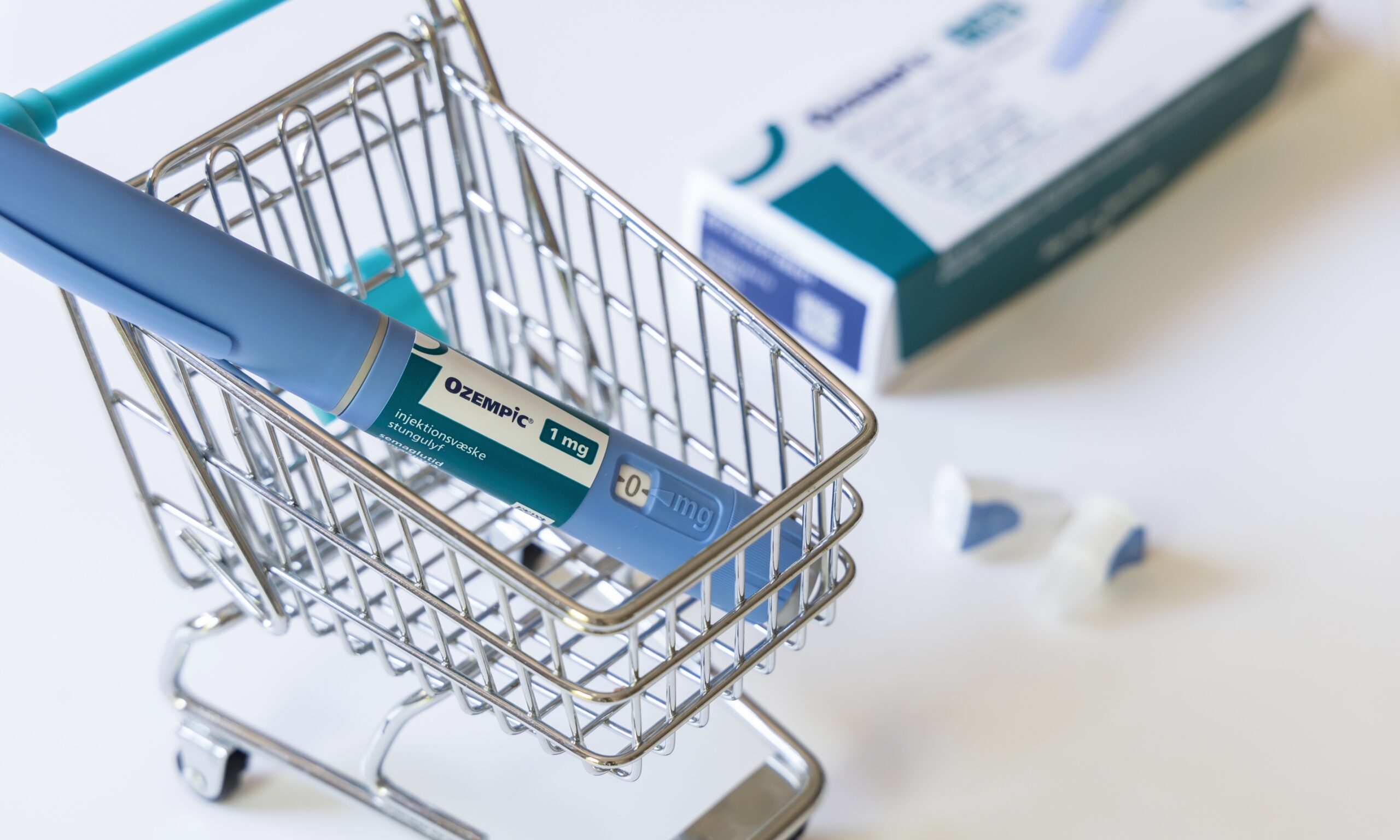Happy Friday, and welcome to Food Fix. I hope you’re all taking care of yourselves and your loved ones with the horrifying news coming out of Israel and Gaza. The slaughter of civilians is never justified.
This week in Food Fix: If you’re not yet a paid subscriber, you missed Tuesday’s newsletter on what to know about California’s historic ban on four controversial food additives – and what’s next. Let’s fix that: Check out annual subscription options.
As always, I love hearing from you and truly welcome your feedback. You can land in my inbox by replying to this newsletter or dropping me a note at: helena@foodfix.co.
Alright, let’s get to it –
Helena
***
Why Wall Street is so nervous about Ozempic
In case you haven’t been paying attention: Wall Street is kind of freaking out about Ozempic.
A new class of diabetes and weight-loss drugs known as GLP-1 agonists, which includes Ozempic, Wegovy and Mounjaro – though Ozempic has become shorthand for them all – has been blamed in recent weeks for dragging down health care stocks across the S&P 500 Index, slashing the future outlook for companies that make things like insulin pumps and sleep apnea devices. This week, leading dialysis providers, Fresenius and DaVita, saw stock prices plunge due to news that Ozempic is surprisingly effective at staving off kidney failure.
A growing number of Wall Street analysts are also now warning that demand for snacks, fast food, sugary drinks and even alcohol could be curbed by increased adoption of these drugs. Last week, Walmart said its shoppers on Ozempic purchased less food. And investors are increasingly shorting – or betting against – restaurant stocks like Chipotle and McDonald’s.
“Shares of PepsiCo, Coca-Cola, Conagra Brands, and Campbell Soup have shed an average of 13.5% in the past six months, according to numbers crunched by Yahoo Finance,” wrote Brian Sozzi, executive editor of Yahoo Finance, in a column this week about food stocks getting “pummeled.”
“Blame the proliferation of injectable weight loss drugs such as Ozempic and Wegovy potentially stunting demand for food,” Sozzi continued. “Wall Street has latched onto this world-is-ending thesis for these large-cap dividend dandies.”
It’s become so common that investors have a term for it: Getting Ozempic’d.
Bloomberg ran a blunt headline this week summing up the vibes in some corners: “Ozempic is bad for business.”
The clear winner here is, of course, Danish drugmaker Novo Nordisk. Thanks in large part to the seemingly limitless demand for Ozempic and Wegovy, the pharmaceutical company has ballooned to being the most valuable company in Europe. Eli Lilly, maker of Mounjaro, is also having a bang-up year.
Watching this, it’s hard not to get hit with the stark reality of just how many big businesses are built on our diet-related disease epidemics, which come at great human cost. An effective treatment for obesity (and diabetes) might one day prove to be very good for public health, yet very bad for business.
It’s complicated, of course: While these drugs are driving the overarching narrative on Wall Street, there are also other, unrelated reasons why food stocks are suffering, like climbing interest rates and the continued hike in consumer prices. While some companies have pumped profits by raising prices, they’re actually moving less volume, which isn’t sustainable. And some analysts think investors may have overreacted to the Ozempic factor.
“The reality is the large food companies have proven their resilience over many decades of new healthier lifestyle trends,” Sozzi of Yahoo Finance noted. “Ingredients in packaged food have evolved — think quinoa in a frozen dinner instead of starchier white rice, or a stevia-based flavored seltzer instead of full-sugar cola. Best believe these mammoth food companies will adapt and overcome.”
A changing world: I think it’s too early to tell if these drugs will fundamentally reshape demand for food, but it does seem clear that if they were widely adopted, the ripple effects would be quite broad. Research from Morgan Stanley last month (based on a survey of 300 patients) found that the treatments can reduce caloric intake by 20 to 30 percent daily.
“Significantly, survey participants cut back the most on foods high in sugar and fat, reducing their consumption of confections, sugary drinks and baked goods by as much as two-thirds,” the analysts concluded. “As more people in the U.S. use obesity drugs, overall consumption of carbonated soft drinks, baked goods and salty snacks may fall up to 3% by 2035.” This same report estimates 24 million people – roughly 7 percent of the U.S. population – will be taking these drugs by 2035. The potential market is huge: More than 40 percent of U.S. adults now have obesity and 70 percent are overweight.
Misaligned interests: The truth is that Americans eating less is bad for the food industry – and that awkward tension has only just begun to surface. I got quite a few messages regarding a recent quote from Kellanova Chief Executive Officer Steve Cahillane, who told Bloomberg that the company – which recently split from Kelloggs and is now focused on snack brands like Cheez-It, Pop-Tarts and Pringles – is ready to respond if needed to the Ozempic factor.
“Like everything that potentially impacts our business, we’ll look at it, study it and, if necessary, mitigate,” Cahillane told Bloomberg, stressing it was premature to make predictions.
Which begs the question: How exactly would we Ozempic-proof snack foods like Pringles? And perhaps more importantly should we? Health experts pretty uniformly agree that Americans eat too much.
And it’s not just the food industry: Health care will also struggle with this tension. For example, some in the dialysis industry are arguing it will be good for business because these drugs will help keep patients alive longer, thus needing their services for a longer period of time. (It’s hard not to read this as: Don’t worry, people will still have kidney disease, just for longer and with more profit opportunities.) Perhaps this is just business leaders doing their jobs, but it’s painful to watch.
Beyond food stocks: If these drugs are widely adopted across the U.S., there could be cascading effects that go way beyond changing eating habits and shrinking market caps. The macro savings to the health care system (think insurers, employers, the federal government, etc.) could be massive. I’ve seen predictions about productivity increasing due to better overall health and speculation about whether people living longer could further strain housing stocks. There have even been headlines positing that large-scale weight loss could save airlines money. (Though this feels like a stretch to me.)
Of course, the cost of these drugs will almost certainly need to drop for any big shifts to occur – they currently run $900 to $1,300 per month – and considerable weight gain is likely once the treatment is stopped. Over time, we also continue to learn more about potentially dangerous side effects. There is still a lot we don’t know. For now though, it’s wild to watch Wall Street panic.
***
What I’m reading
The wait for food stamps in Alaska is improving, but applicants still face long delays (Alaska Public Media). “Alaska’s food assistance program has processed the oldest applications from a backlog plaguing the state for more than a year, but many applicants still have to wait for up to three months to receive benefits,” reports Rachel Cassandra. “In April 2023, when the backlog was at its worst, thousands were waiting for help buying food, some for as long as eight months. State officials blamed a cyberattack and an influx of paperwork when its COVID-19 public health emergency ended but some state workers pointed to chronic understaffing. Public Assistance Director Deb Etheridge said the division has hired more people to process applications. She said the federal Food and Nutrition Service that oversees the program wanted the state to prioritize the oldest applications and renewals.”
USDA makes available more than $60 million in school meals, launches new partnership (USDA). This week the department “unveiled two new grant opportunities plus a training and technical assistance partnership to help schools continue to invest in nutritious school meals. This announcement helps to reach the goals released in conjunction with the historic White House Conference on Hunger, Nutrition, and Health in September 2022 to increase access to healthy foods for students at schools across the country … USDA is partnering with the Urban School Food Alliance to provide trainings and tools to school districts that will help them purchase high quality foods, while keeping costs low.” USDA also announced it’s begun accepting applications for the next round of USDA Farm to School Grants and will soon open applications for the School Food Systems Transformation Challenge Sub-Grants.
Why BMI is flawed — and how to redefine obesity (Nature). “[Body Mass Index (BMI)], which is calculated by dividing weight by height squared, has been used for several decades as an international standard to determine healthy weights. It serves as a proxy for body fat, and higher numbers can indicate increased risk for metabolic disease and death,” writes McKenzie Prillaman. “But BMI does not measure body fat, and it also ignores factors that affect how healthy someone is at a given weight, including age, sex and race. Not everyone with a high BMI has poor health or a raised risk of death. That’s why there is a small but growing movement to go beyond BMI when diagnosing and treating obesity … In June, the American Medical Association (AMA) called for more weight-related metrics to be used in conjunction with BMI owing to its imperfections and questionable history.”
Food industry influence could cloud the U.S. Dietary Guidelines, a new report says (New York Times). I missed this one last week: “It is a long-running concern of government watchdogs: Some of the experts responsible for helping to craft the U.S. dietary guidelines also take money from big food and drug companies,” writes Alice Callahan. “A report published [last Wednesday] by the nonprofit U.S. Right to Know makes those concerns plain. Nine of the 20 experts on the 2025 Dietary Guidelines Advisory Committee have had conflicts of interest in the food, beverage, pharmaceutical or weight loss industries in the last five years, the report found. The current committee members have far fewer industry ties than those in years past, said Marion Nestle, a professor emerita of nutrition, food studies and public health at New York University who served on the 1995 committee and is a frequent critic of the guidelines.”
***
Work in food? Upgrade to get more.
Become a paid subscriber to unlock access to two newsletters each week, packed with insight, analysis and exclusive reporting on what’s happening in food in Washington and beyond. You’ll also get full access to the Food Fix archive – a great way to get smart on all things food policy.
Expense it: Most paid subscribers expense their subscriptions through work. It’s worth asking!
We also offer discounts for government, academia and students. View subscription options.
Individuals who participate in SNAP or other federal nutrition programs also qualify for a free subscription – just email info@foodfix.co.
Get the Friday newsletter: If someone forwarded you this email, sign yourself up for the free Friday edition.
You can also follow Food Fix on X (formerly known as Twitter) and LinkedIn.

